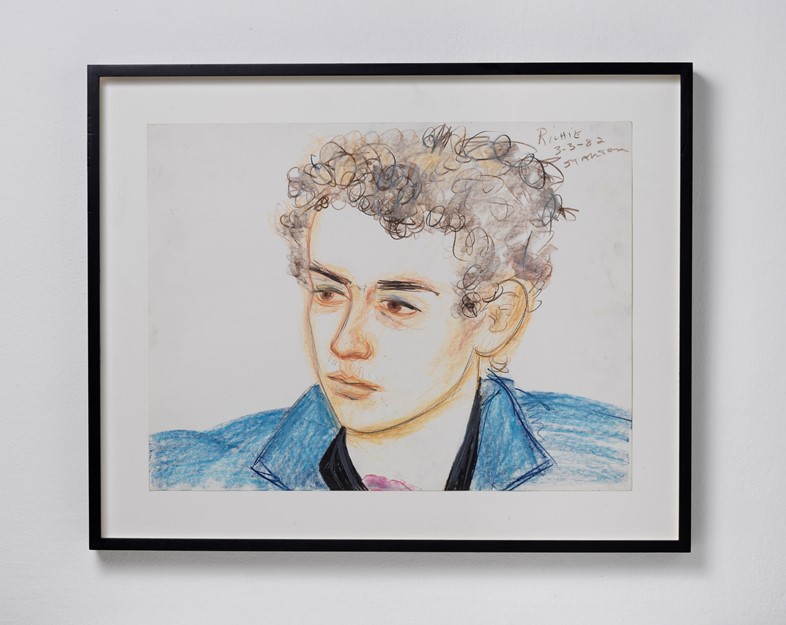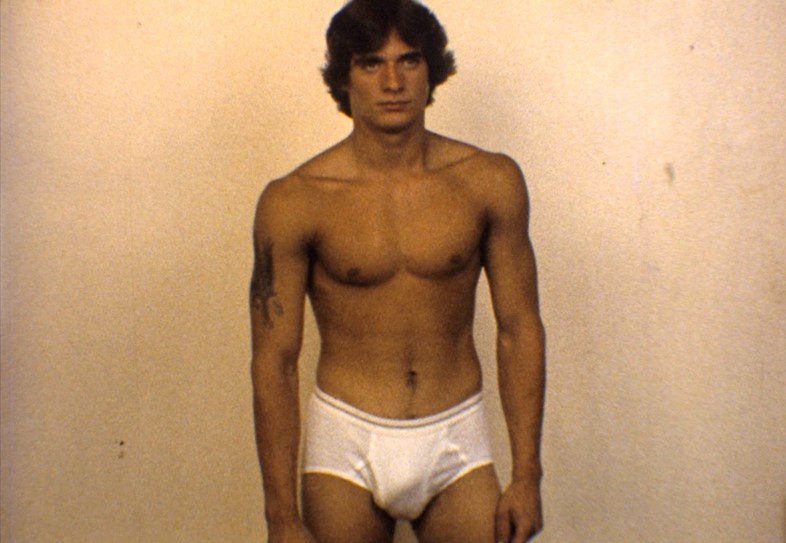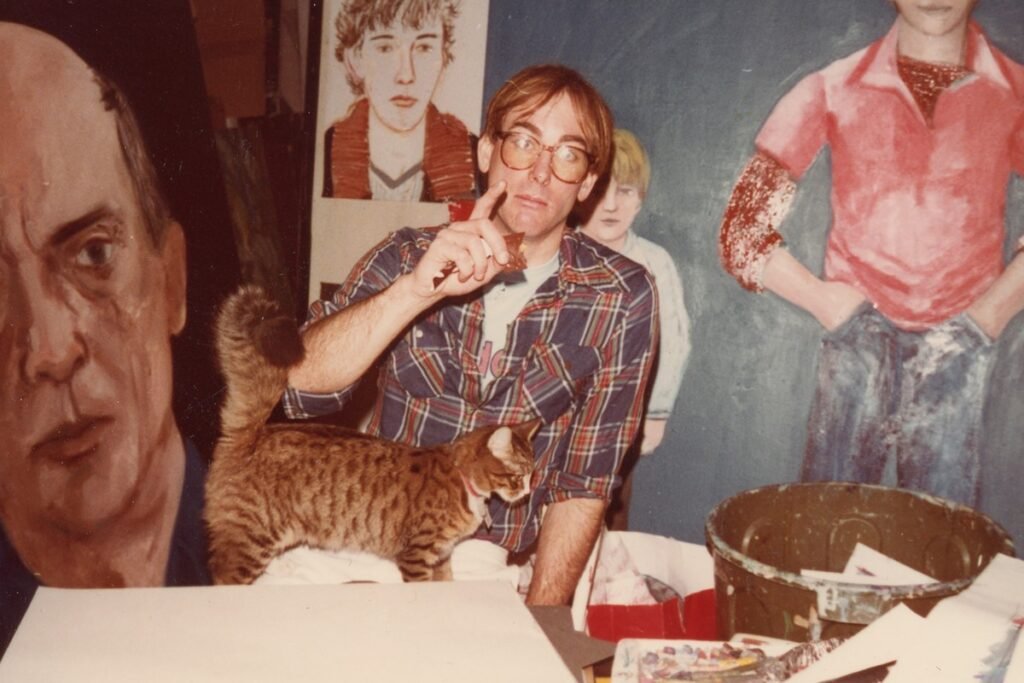Larry Stanton, Images at Apalazzo Gallery14 Images
In the Greenwich Village of the early 80s, Larry Stanton was a familiar sight. By day, the artist carried his sketchbook from bars to coffee shops, friends’ apartments, and his own cramped studio, where he rubbed shoulders with artists and writers like David Hockney, Ellsworth Kelly, and Christopher Isherwood. By night, he found models for his paintings and drawings in young, gay men, many of whom had escaped to NYC in order to live as their authentic selves.
In 1984, Stanton died of Aids-related complications, aged 37. Still in the formative years of his career, and without gallery representation, he faded into relative obscurity. Now, a new show in Italy, his first dedicated retrospective, aims to give him the recognition he deserves, via a collection of his most significant works, including pencil and pastel sketches, paintings, videos, and pages from his ever-present notebooks.
Titled Images, the exhibition at Brescia’s Apalazzo Gallery came together with the help of the artist’s estate and Arthur Lambert, his ex-lover. “Lambert treasured Larry’s life through his art,” says Chiara Rusconi, who founded Apalazzo Gallery alongside Francesca Migliorati in 2008. “Entering his home and spending time with him was like a journey through time: the great revelation was realising how vivid, intact, and so contemporary Larry’s artistic production was.”

Their meeting was arranged by Fabio Cherstich, a theatre and opera director, and co-founder of the Estate of Larry Stanton. For him, shining a light on Stanton’s work is part of a broader investigation into the queer art scene that thrived in 1980s New York City. “The project stems from my personal desire to narrate the stories of friends from the present,” he says, “in dialogue with the spectres of the past that have irrevocably marked the course of my life.”
As a gay artist at the core of this art scene in the 80s, Stanton’s work is inextricably tangled up with the HIV/Aids crisis. While emerging from his own personal struggles (after the death of his mother, he became dependent on alcohol and was briefly institutionalised as the result of a psychotic episode) he “almost frantically” portrayed the young men of NYC, many of whom would pass away in the following years. Not only did he immortalise their “lively and innocent” expressions in his art – as Lambert writes in the 2022 monograph Think of Me When It Thunders – but also recorded intimate, evocative details of their lives. Phone numbers are scrawled on the back of photographs, while the margins of notebooks are filled with the names of the characters in his orbit. Chris, Harvey, Arthur, Robbie, Steve, Philip.

Outside of the crisis itself, Stanton captured a culture of joy and creativity, full of life. Super 8 videos capture the clandestine hedonism of Fire Island between 1975 and ‘79, accompanied in Images with a playlist curated by East Village icon Vince Aletti. Elsewhere is an unreleased video that shows Hockney working on his famed Paper Pools series in 1978, drawing out the creative process of one of the world’s most celebrated artists, but also a more personal sense of the social sphere he inhabited: artists and writers who regarded each other as both friends and mentors. Stanton gained from Hockney his “refined stroke in drawing and compositional grace, as well as his use of colour,” notes Cherstich. “Isherwood was a friend with whom he shared a queer sensibility and a love for beauty in all its forms.”
Altogether, he adds, Stanton’s works “tell us about the beauty of a generation that was having a great time and was changing the history of American art and culture – and beyond – only to be tragically swept away by Aids.” In his art, though, adds Rusconi: “[That] community of artists, who are now part of art history, seem to come to life again in such a spontaneous way. What interests me most about Larry Stanton is how authentic his poetics were, and how unique his practice was, with his passion for faces and the stories hidden behind each one of them.”
Images is on show at Apalazzo Gallery until January 6, 2025.







